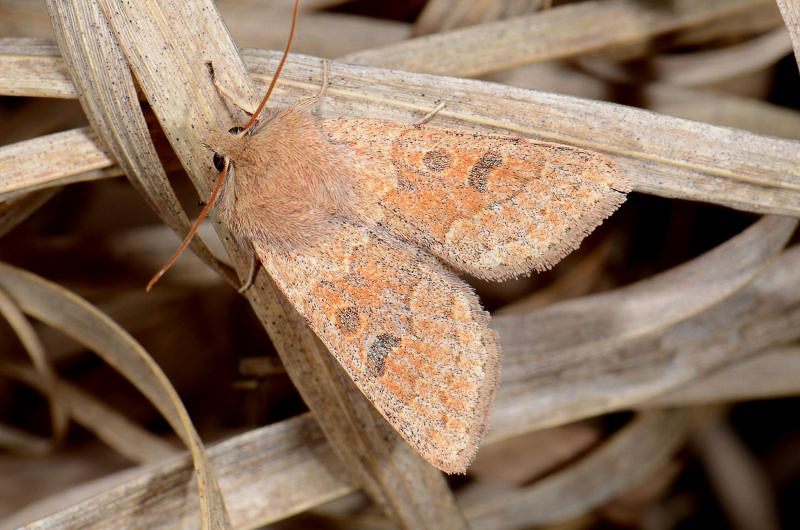
Photo © Ernest van Asseldonk
Orthosia miniosa, the blossom underwing, is a moth of the family Noctuidae. The species was first described by Michael Denis and Ignaz Schiffermüller in 1775. It is found in Europe.
The wingspan is 31–36 mm. The length of the forewings is 15–17 mm. Forewing sandy rufous, black speckled, median area generally deeper rufous: lines browner, edged with pale, the outer dentate lunulate; stigmata with yellowish outlines and grey centres: submarginal line rufous and yellowish: hindwing white, rosy tinged along the termen; cellspot, outer line, and veins sometimes well-marked. Form rubricosa Esper is the form in which the red of the median area is most emphasised. Form pallida Tutt is greyish ochreous, with hardly a vestige of rufous: in virgata Tutt, while the basal and marginal areas are grey, the median space is rufous.
The moth flies in one generation from the end of March to mid-May.
Larva pale or dark blue grey; dorsal and subdorsal lines yellow; the sides black with a yellow spiracular line, marked with a white spot on each segment; head whitish with coarse blackish mottling. The larvae feed on various trees and shrubs, mainly oak.
Source: Wikipedia
The primary larval foodplants are birches (Betula spp.), Blackthorn (Prunus spinosa), Bramble (Rubus fruticosus), Hawthorn (Crataegus monogyna), Hazel (Corylus avellana), Meadowsweet (Filipendula ulmaria) and oaks (Quercus spp.).